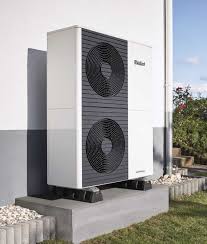When it comes to selecting the right heat pump system for your home, knowing the distinctions between air source and ground source heat pump (tepelné čerpadlo) is essential. Both systems offer efficient and energy-efficient cooling and heating solutions however, they operate in different ways and offer different types of advantages and factors to consider.
Air Source Heat Pumps (ASHPs) draw energy from the outside air and bring it into your home. They work efficiently throughout colder weather, although their effectiveness may decrease as temperatures drop. ASHPs are typically simpler and more affordable to install as when compared to ground heat pumps that are sourced from the ground. The installation process involves placing an unit outside of your home, and then connecting the unit to the heating device, which is a simpler option for those with limited space or you are looking for an easier option that isn’t as invasive.
The primary advantage of ASHPs is their less initial cost and simpler installation process. They also aren’t dependent on the available land, which makes the ideal choice for urban or urban areas in which space is limited. However, their performance is affected by extreme cold temperatures, and they might need a backup heating system for extremely cold climates.
Ground Source Heat Pumps (GSHPs) On the other hand, extract heat from the earth through a system of buried pipes. These systems make use of ground’s steady temperature to provide steady cooling and heating throughout the year. The GSHPs are renowned for their high efficiency and less expensive operating costs since the ground temperature is constant irrespective of the weather above ground.
While GSHPs are much more efficient and reliable even in extreme temperatures but their installation is complex and expensive. The process involves digging trenches or drilling boreholes to lay underground piping, which can be difficult and require a lot of surface area. As a result, the initial investment for GSHPs is more expensive, however the long-term savings on energy bills as well as the lower environmental impact often justify the cost.
The decision to choose between GSHPs and ASHPs is contingent on a variety of aspects, such as your climate, available space and budget, as well as your longer-term energy goals. If you’re in a region that experiences mild winters and little space and a limited budget, an ASHP may be a practical and economical option. Conversely, if you have plenty of land and require an efficient system that can provide constant effectiveness all year round, a GSHP could be the better option.
In sum the air source as well as ground source heat pump provide significant energy savings as well as environmental benefits. Assessing your specific needs, budget, and local climate can help you make an informed decision and select the system which best suits your home and lifestyle.

